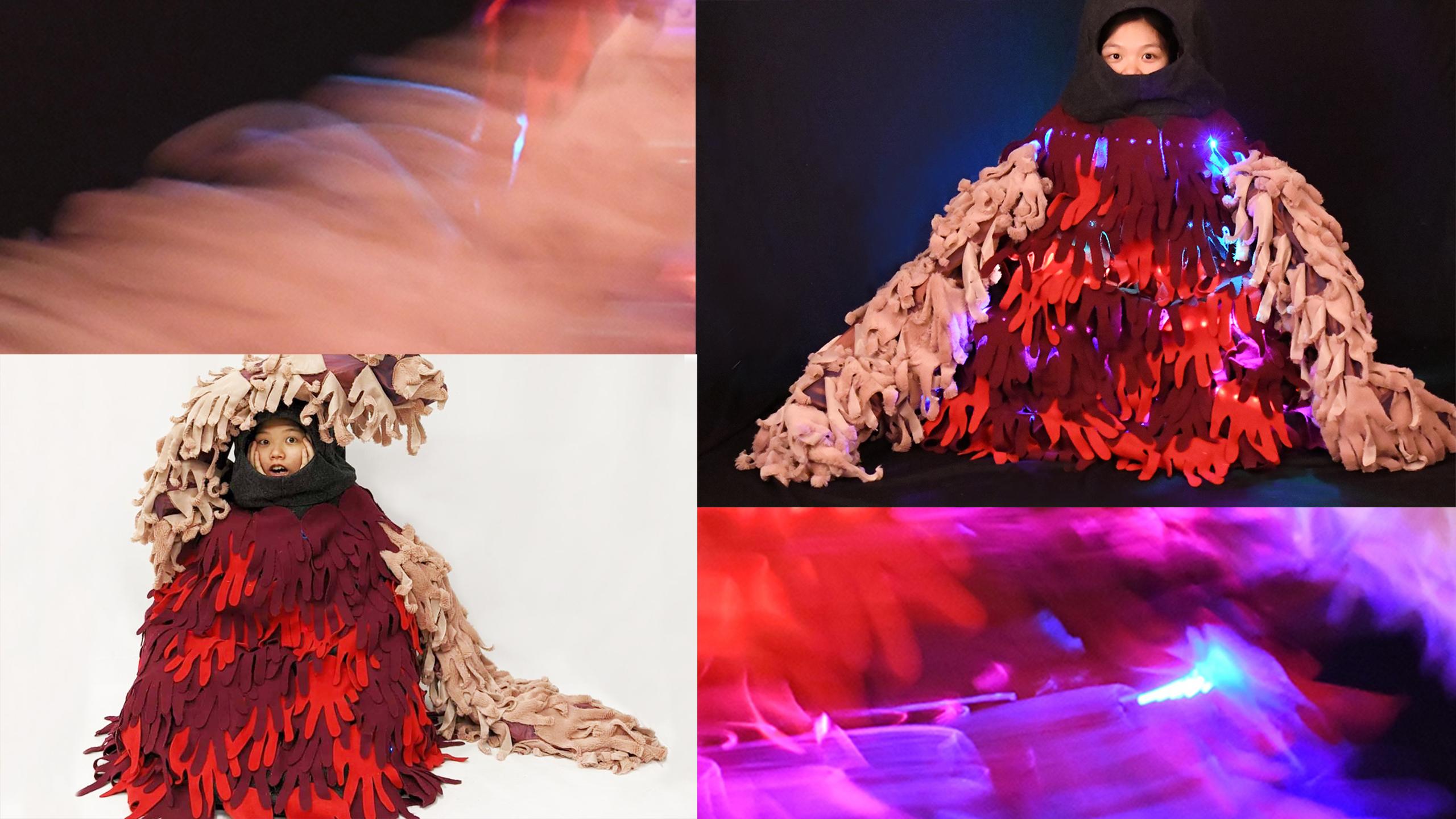By Khushy Vashisht
In collaboration with Cadillac Fairview, The Creative School showcased student and faculty-made artwork that was designed with the influence of technological advancements from Jan. 10 to Jan. 29 at the Eaton Centre.
The exhibit, titled “Creative Technology Showcase: Disrupting Technology in the Creative Fields,” strived to “push the boundaries of creative technology,” according to the display description. It featured pieces made in the school’s Design + Technology Lab using tools like 3D printers, laser cutters, digital knitting machines and more.
Nora Alkeyat, a 2021 graduate from Toronto Metropolitan University’s (TMU) interior design program, had her piece titled “Growth” showcased at the exhibit. The dome-like structure, which was 3D printed, was Alkeyat’s final project in her graduating year. Its vibrant red colour, paired with intricate patterns resembling brain-shaped coral species, worked together to create a prototype light fixture. In creating this piece, Alkeyat examined patterns in nature, which she said she is inspired by.
“I like to explore 2D and 3D patterns and how they can impact spaces and our environment,” she said. “Especially in urban settings, being reminiscent of nature can be very inducing of stimulation and just [provide] a visual interest.”
Alkeyat also reflected on the impact of her work being displayed to the public. She said she went to the exhibit this past weekend with her parents. Knowing that her work was on display made her parents proud, she said. “Just having a platform, that’s why it means a lot to me.”
“Especially in urban settings, being reminiscent of nature can be very inducing of stimulation”
Chloe Chen, a 2022 graduate of TMU’s fashion program, designed and created her piece titled “Living Self.” The costume was one of the two parts of her final project titled, “Pound of Breathing Flesh,” which she completed before graduating. The “Living Self” was a costume that had hanging arms attached to it in place of arm holes and 250 hand-shaped pieces of felt all over the torso. Colourful neon LED lights were hidden by the hands, only seen once the person wearing the piece spins.
In an Instagram post by Chen, she described the lack of arm holes within the costume contributing to a sense of being trapped and how this contributes to feelings of “working non-stop, the frustration of being unable to control things, the anxiety of not knowing who we are [and more].”
Chen said her inspiration came from living in a capitalist society—one she deemed to be corrupt and toxic. “I think it represents a lot of us, normal people living but at the same time the piece is very cautioning,” Chen said. “Are we really living or just surviving?”
“The name is ironic because it’s the ‘Living Self’ but are we actually living is the question,” she added.
Chen said her interest in the concept of interactive design allowed her to combine technology with costume. Chen’s project used laser cutting to create the felt hands and creative coding to control the neon LED lights under the material.
Chen said incorporating these new technological tools within her work positively impacted her confidence. “I feel like technology was really far from me,” Chen said. “Now, I feel like I’m actually a part of the community and it makes me excited and makes me want to pursue more in this field.”
“Are we really living or just surviving”
Carol Varghese, a second-year professional communication student who worked at the exhibit, said she saw an average of 50 to 60 people visit the exhibit during her four-hour daytime shifts.
“I [saw] people from all different fields. People who work in tech—they’re super interested in what each of these pieces are about and what machines they use to make it,” Varghese said. “But we also get people from everyday life…just normal people who are students.”
Jonathon Anderson, an associate professor at the School of Interior Design and director of the Design + Technology LAB, said he was approached by The Creative School to compile a series of pieces that could go above and beyond in creativity, software and hardware.
“The Eaton Centre is really interested in expanding its portfolio of creative activities and programming for culture and the arts,” Anderson said. “We collected [the work of] students, staff and faculties that [consist of] not only the various pieces of hardware that we have down in the lab but also start to push some of the software that we have available in the lab as well.”
Anderson added that he is working on creating instructional workshops for using the Lab’s technology. He hoped to have more news about the potential workshops later in the winter 2023 semester











Leave a Reply